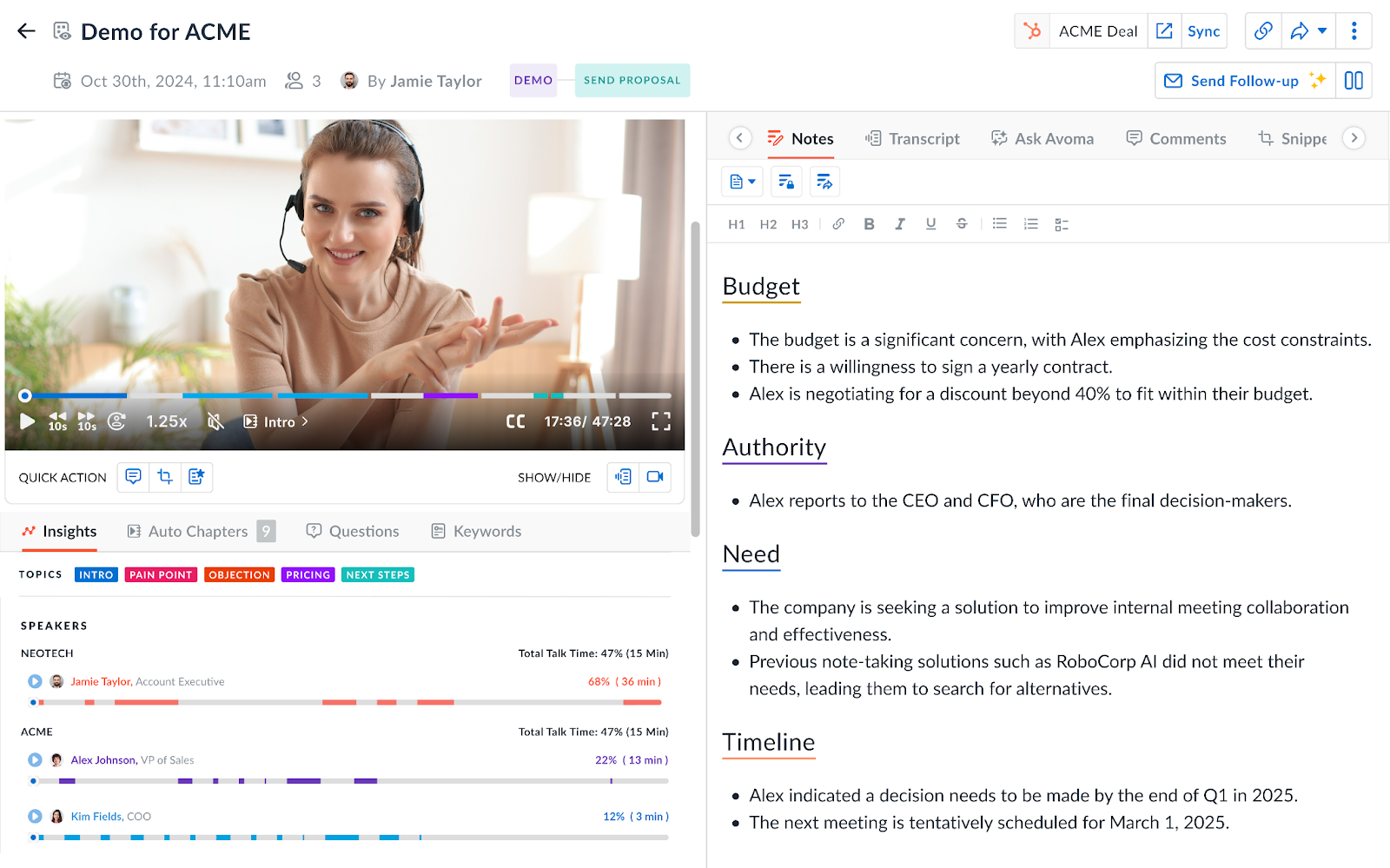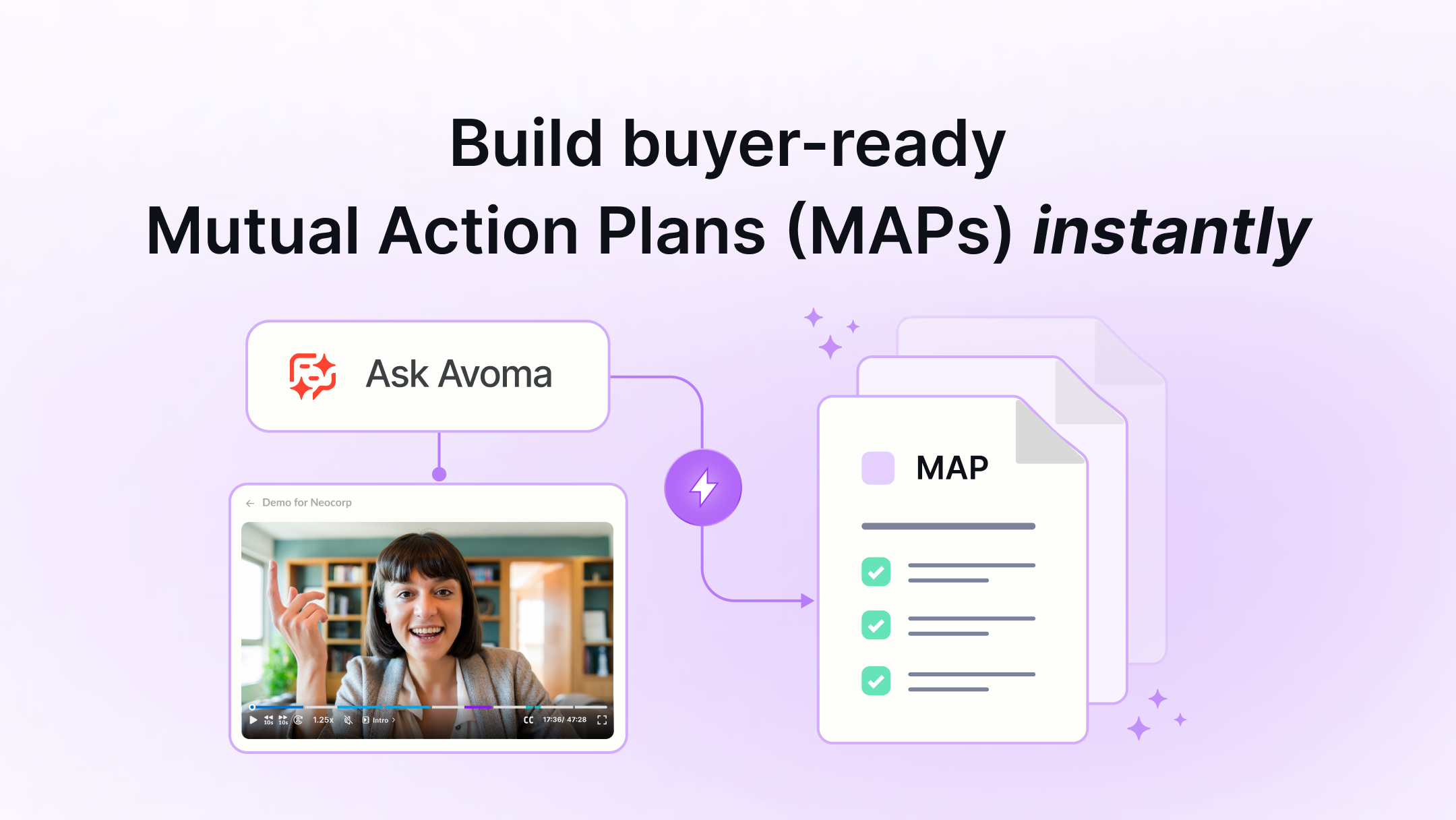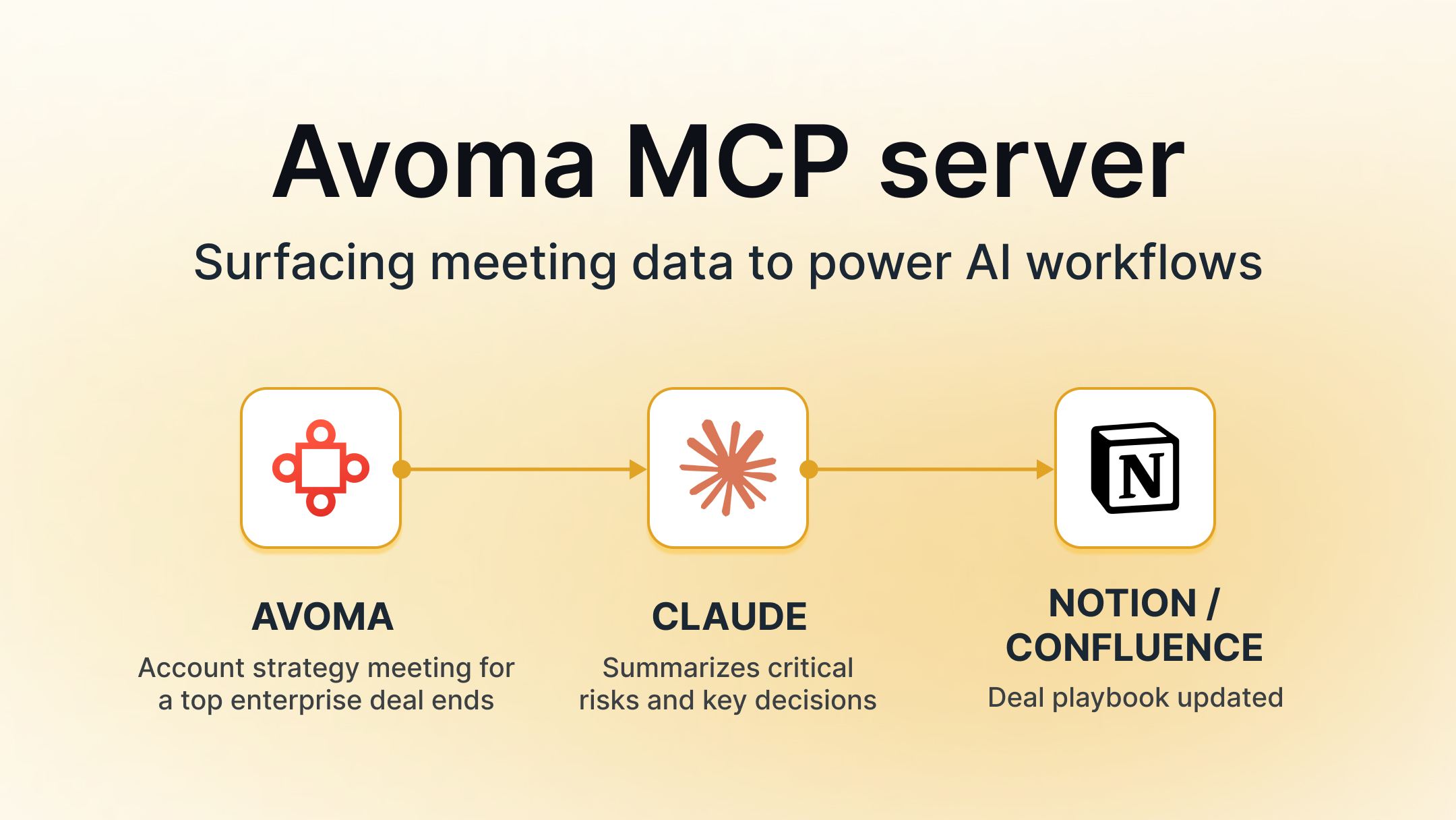How to automate CRM data entry for Sales and CS meetings
Table of Contents:

CRM data gives you a clear view of customer behavior. It helps you personalize interactions and be better at sales and service. With smart segmentation and a centralized database, you can target high-value leads and make data-driven decisions that improve ROI.
Yet, many sales and customer service teams find entering their meeting conversation data into CRM tedious.
In fact, according to the Beagle Research report of more than 500 inside sellers, 66% of sellers said they would rather wait in line at the DMV or do jury duty than update their CRM. And 98% wished they had the superpowers today’s intelligent tools offer.
Fortunately, AI-powered CRM data entry automation is a reality. Many teams are now enjoying error-free, up-to-date data while focusing on selling and serving their customers instead of manual updates.
If you haven’t yet automated CRM data entry for your sales and customer service calls, this article will guide you step-by-step.
But before we jump to the steps, let's quickly learn how AI helps with data entry automation.
How AI automates meeting data entry in your CRM
It all starts with an AI meeting assistant. These tools use natural language processing to transcribe and analyze your meetings, calls, and emails.
They then pick up key details like customer needs, deal progress, action items, etc.
Once captured, the system automatically maps the information to the right CRM fields.
Automating CRM data entry for Sales and CS meetings
Manual CRM updates are one of the biggest time drains for Sales and Customer Success teams. Between taking notes, updating contact records, logging next steps, and assigning follow-ups, reps often spend more time on admin than on actual selling or customer engagement.
Most of these updates can be automated.
This section explains exactly how to streamline your CRM data entry process step by step so your team can focus less on logging data and more on closing deals and keeping customers happy.
Step 1: Choosing the right AI meeting assistant
When you think of AI meeting assistants, you might picture tools that only transcribe meetings or take notes. But some go much further—handling follow-ups, coaching, and CRM data entry. If your focus is to automate CRM data entry, it pays to pick a tool with solid CRM integration.
Here’s what to look for:
- Robust CRM integration: The tool should work with popular CRMs like Salesforce, HubSpot, Zoho, or Pipedrive.
- Multi-channel data capture: It should capture data from calls, video conferences, emails, and more.
- Two-way sync: Updates should flow seamlessly between the tool and your CRM.
- Advanced customization: Options to tailor note prompts based on meeting types or sales stages can really streamline your workflow.
For instance, Fireflies provides basic conversation analytics and syncs meeting notes and call data with your CRM partially, while Otter AI mainly focuses on transcription and collaboration. If you need a more comprehensive solution, a tool like Avoma might be the better choice for your team.

Step 2: Integrate your meeting assistant with your CRM and communication platforms
Once you choose your AI meeting assistant, link it with your key systems. Connect your CRM (Salesforce, HubSpot, Zoho, or Pipedrive), video conferencing tools (Zoom, MS Teams, etc), dialers (Aircall, Zoom Phone, or RingCentral), and email platforms.
Invite your team members to join and have them connect their calendars too. This simple integration keeps everyone in sync and ensures a smooth, efficient workflow.
Avoma natively integrates with CRM tools like HubSpot and Salesforce. The one-time setup is quick and seamless, requiring just a single click within Avoma.
Step 3: Set up AI-powered field mapping for CRM automation
Once you have connected your communication tools and CRM with your meeting assistant, you can map smart topics from your conversations to the right CRM fields.. This one-time setup will ensure that data can be updated automatically whenever a call or meeting happens.
The first step is to choose the CRM category you want to sync, such as deals, contacts, or companies.
Then, map CRM fields in each CRM category to your AI meeting assistant’s categories.
Also note that the data flow can be outbound (AI to CRM), inbound (CRM to AI), or bidirectional depending on the type of field that is being mapped. We recommend 2-way sync so that no matter where edits happen, the data is always up to date.
You should also set editing permissions and track who connects or edits each field.
Ensure that, apart from basic field mapping, your AI Meeting assistant provides more advanced mapping options.
For example, Avoma provides the following flexible options:
- 2-way CRM sync: Avoma’s two-way CRM sync keeps your custom fields up to date by automatically reflecting any changes made in either your CRM or Avoma.
- Customizable Smart Topics: You’ll want to customize the keywords and context the AI picks up from conversations, along with note formatting, to create smart topics that are clear and actionable when synced to your CRM.
- Trigger Prompts: You can define specific phrases or questions that, when discussed on a call, will prompt the AI to automatically capture these key insights, ensuring your notes stay relevant and important triggers aren't missed. "
- Keyword tracking: You can set up exact words or phrases for AI to monitor during your conversations. AI will extract these exact matches when spoken, ensuring important details like competitor mentions or discussions about new features are tracked.
- Smart Trackers: Most tools only track exact keywords, but people discuss ideas in different ways. Smart Trackers are used to recognize broader concepts across conversations, even when phrased differently, making it easier to track key topics and triggers without relying on exact matches.
- Meeting templates based on call type: Your AI meeting assistant should allow you to create custom meeting templates for all your different types of meetings. Templates help you prepare for meetings, guide discussions, and organize AI-generated notes the way you want them. They should also allow you to add smart topics to meeting notes, ensuring your reps capture all the crucial CRM information during each call.
CRM field mapping based on the sales stage and meeting types
Capturing information based on sales stages or meeting types helps maintain detailed CRM records. This helps with deal progression, improves forecasting accuracy, and strengthens customer relationships.

Here's the key info to capture at each sales stage and meeting type:
Sales stages and CRM inputs
Sales & Customer Success (CS) meeting types and CRM inputs
An ideal AI meeting assistant should offer flexibility to capture specific details in the conversation based on the call type and update the CRM.
Avoma allows you to create templates based on meeting types and set up scorecards aligned with sales cycle stages and meeting objectives.
This ensures reps stay on track, ask the right questions, identify gaps and opportunities, and self-coach for continuous improvement. All this is to keep your CRM updated and accurate.
For example, if the meeting is a discovery call, following your sales methodology like BANT, can be automatically applied to the meeting through a template and scorecard. Reps can use the BANT template to structure questions around Budget, Authority, Need, and Timeline. Once this data is collected, the meeting assistant will push it to respective CRM properties.
Similarly, you can use frameworks like MEDDIC or SPIN Selling to track opportunities effectively. Post-sales and customer success teams can map fields for CS handoffs, onboarding, and win-loss analysis, while tailored prompts capture key metrics on retention and satisfaction.
This flexible CRM mapping ensures every interaction delivers the required information depending on the meeting's purpose.
Step 5: Train your reps to improve data accuracy with AI-powered CRM automation
Even if AI handles most of the CRM data entry, your team’s input still matters. Every conversation should cover the key details so the AI records accurate, actionable data.
Ask the right questions
Guide your reps to ask questions that naturally lead the conversation to cover every needed detail. This way, discussions reveal customer pain points, risks, and opportunities that the AI can later capture.
Instead of simple yes/no queries, they might ask open-ended questions:
- “What challenges are you facing with your current process?”
- “How do you plan to measure success with our solution?”
An AI meeting assistant like Avoma can automate the coaching process for you. It can score the conversation by analyzing all these checkpoints, like if the reps are asking open-ended questions, if they are trying to collect all key points.
If teams decide to follow a specific sale methodology, they can also use AI scorecards to help reps stick to it and ask the right questions to collect the information they need.

Listen actively and add context
When your reps listen carefully, it puts your prospect at ease and helps you catch subtle points that might otherwise be missed. By actively listening, reps can add context so that every critical detail is collected.
Additionally, letting the other party speak more can help gather as much information as possible.
Verify details after the call
Even with automated data capture, a quick review after each call helps catch any missing details. This ensures the CRM reflects the full conversation, with no gaps left behind.
Follow up on time
A prompt follow-up builds trust and gives your reps another chance to confirm or gather missing details. If any key points were overlooked during the call, a quick follow-up makes sure the CRM shows a complete view.

Use a checklist for critical data points
Equip your team with a simple checklist that outlines the must-have information for every call. This ensures that all the topics like deal risks, customer pain points, and upsell opportunities are naturally covered so nothing slips through the cracks.
By combining targeted questioning, active listening, and a focus on every key point, you can boost the accuracy of AI-powered CRM automation and make every interaction count.
Step 6: Monitor and improve your sales process automation
Automation isn’t a one-time fix. To maintain accurate data entry, regularly audit and refine your workflows.
- Review system logs and error rates: Identify inconsistencies or missing data points and adjust automation rules to improve accuracy.
- Gather feedback from your team: Identify gaps that still require manual entry and optimize processes accordingly.
- Explore additional automation solutions: As your sales pipeline evolves, you may find new opportunities to streamline workflows and boost efficiency.
Conclusion and next steps
CRM data entry might seem like just another task on your plate. But imagine the edge you gain by turning it into a seamless, smart process.
You don't want to be the team still drowning in manual updates while others are closing deals faster.
With Avoma, those challenges fade away. Its AI-driven automation captures every crucial detail from your meetings, so you can say goodbye to tedious data entry and focus on building relationships and driving revenue.
Think about it as a tool that tailors its data capture to your specific sales stages and meeting types, ensuring you never miss a key opportunity.
Leave manual updates behind and join the future of CRM automation. Try Avoma today or book a live demo to see how you can outpace the competition.
Frequently Asked Questions






What's stopping you from turning every conversation into actionable insights?








